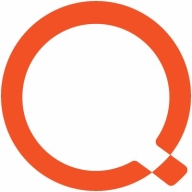

Red Hat Ansible Automation Platform and Quest KACE Systems Management Appliance (SMA) compete in the IT automation and endpoint management category. Ansible appears to have the upper hand in automation and ease of use with its agentless architecture, while Quest KACE stands out in comprehensive asset and endpoint management.
Features: Red Hat Ansible Automation Platform offers agentless architecture, robust community support, and extensive automation capabilities through YAML syntaxes. Quest KACE Systems Management Appliance excels in endpoint management, asset management, and provides integrated help desk and patching functionalities.
Room for Improvement: Ansible could enhance scalability, documentation clarity, and support for complex configurations. Users find its agentless nature challenging for handling extensive server networks simultaneously. Quest KACE could improve scalability for large deployments and simplify the patching process, focusing on enhanced automation and reporting features.
Ease of Deployment and Customer Service: Red Hat Ansible Automation Platform is well-suited for hybrid and public cloud environments with strong community resources for troubleshooting. Quest KACE is mainly deployed on-premises, offering ease of endpoint management with responsive technical support. Ansible's community resources are notable, while KACE provides integrated support aimed at structured organizational needs.
Pricing and ROI: Red Hat Ansible Automation Platform has a mix of open-source and enterprise pricing based on node count, offering value through process efficiency but posing licensing concerns for budget-conscious organizations. Quest KACE is priced competitively on a per-device basis, ideal for medium to large enterprises seeking robust endpoint management, providing ROI via efficient asset management and investment value.
The return on investment is seen in the quick access to information, good inventory management, and efficient systems management.
The customer service is very good, providing quick customer support in Spanish.
The product is very scalable as it supports 10,000 thousand endpoints with just one appliance.
Ansible can face scalability issues, such as limitations when trying to scale up infrastructure.
The user interface needs improvement as customers have mentioned they do not like the interface since it is not an SMA-based interface.
More library support for microservices architecture and Kubernetes would be helpful.
More detailed dashboards would be beneficial because there is a lack of dashboards on Red Hat Ansible Automation Platform.
The pricing is in the middle range of the market, not too expensive but not the cheapest either.
The pricing is high, and since I'm not using all functionalities, it would be better if the price depended on the functionalities used.
The most valuable features include simplicity, which makes systems management easier and faster, especially for device management.
The automation capabilities streamline deployment processes, providing reliability and reducing manual intervention and errors.
It makes it simple to develop Ansible playbooks and roles, which aids in simplifying my daily administrative tasks.


Quest KACE Systems Management Appliance is a comprehensive tool for managing IT endpoints. It facilitates asset management, software distribution, and endpoint tracking while offering remote access capabilities and a centralized help desk.
Quest KACE Systems Management Appliance is designed for organizations that need efficient endpoint management. It offers a range of features like inventory tracking, automated patch management, and ticketing. By integrating with remote access tools such as Bomgar, Quest KACE helps reduce manual tasks involved in managing software updates and system deployments. Although it faces challenges in scalability and requires improvements in integration and reporting, it remains a versatile choice for asset tracking and endpoint administration.
What are Quest KACE SMA's key features?Quest KACE Systems Management Appliance is implemented across industries for managing IT assets and endpoints, particularly where remote management and compliance are critical. It's employed in healthcare, education, and government sectors for efficient patch management, inventory control, and software deployment, aiding organizations in managing security accreditations and centralizing help desk operations.
Red Hat Ansible Automation Platform is a powerful network automation solution that allows organizations to handle every aspect of their application launch process within a single product. It enables users to share their automations so that teams within an organization can collaborate on various projects with ease. Ansible Automation Platform is designed to be used by all employees involved in the network automation process.
Red Hat Ansible Automation Platform Benefits
Some of the ways that organizations can benefit by choosing to deploy Red Hat Ansible Automation Platform include:
Red Hat Ansible Automation Platform Features
Reviews from Real Users
Red Hat Ansible Automation Platform is a highly effective solution that stands out when compared to many of its competitors. Two major advantages it offers are its automation manager and its comprehensive centralized GUI-based management interface.
MD J., a solution architect at STBL, says, “The automation manager is very good and makes things easier for customers with multi-cloud platforms.”
Aankit G., a Consultant at Pi DATACENTERS, writes, “We like the GUI-based interface for the tower. Before, we only had a command-line interface to run all the Ansible tasks. Now, the Ansible tower provides the complete GUI functionality to run, manage, and create the templates and the Ansible jobs. This includes the code and YAML file we can create. The GUI interface is the added advantage of this solution, including some integration with the different plugins.”
We monitor all Remote Monitoring and Management (RMM) reviews to prevent fraudulent reviews and keep review quality high. We do not post reviews by company employees or direct competitors. We validate each review for authenticity via cross-reference with LinkedIn, and personal follow-up with the reviewer when necessary.